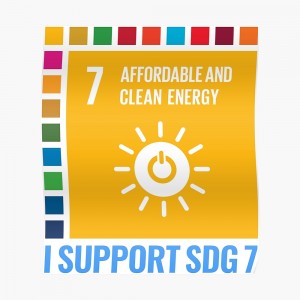From an Article by Mary Anne Hitt, Sierra Magazine, January – February, 2021
My friends,
It takes my breath away to write these words, but we did it. Rooted in our deep love for this planet and one another, we stepped back from the cliff of irreversible climate change. Families around the globe, including mine and yours, no longer face the specter of fleeing their homes because of ever-worsening climate-driven disasters. The fossil fuel industry no longer controls the levers of power to corrupt democracy. And we’re building a world where everyone has clean air and clean water and access to nature.
As we rolled up our sleeves to prevent a climate emergency, our solutions prioritized investments in those communities most harmed by fossil fuels and pollution and those long excluded from economic opportunity. We needed to build so mu6ch clean energy infrastructure to avoid a climate apocalypse, and we didn’t just build it; we built it with family-sustaining jobs and with an eye toward restitution and reparations. Thanks to you, our kids will be raising their sons and daughters in vibrant, resilient communities full of opportunity. This is how we arrived here:
>>>> BEHOLD THE CLEAN ENERGY FUTURE …
First, we powered the country with 100 percent clean energy. An electric grid powered by clean energy was the foundation for turning the corner on climate, and the dirty power plants that were the worst contributors to environmental injustice were the first to go.
Building on a decade of grassroots advocacy, President Biden introduced and Congress finally passed a national 100 percent clean energy standard that put us well on our way to phasing out coal and gas by 2035 while ensuring that vulnerable communities experienced the benefits of the transition.
Big states such as California and New York then set even more aggressive goals, making it clear that a clean energy transition of speed and scale was possible. And since decisions about how we produce electricity are largely made by states, we continued our 50-state energy-transformation push for a decade.
To support communities with economic ties to fossil fuels, Congress included a robust economic transition for fossil fuel workers and community-led economic development. Congress also passed innovative measures like a moratorium on utility shutoffs for households and support for energy-saving home improvements for families spending a high percentage of their income on electricity bills (known as a high energy burden).
Renewable energy kept getting cheaper, and that allowed the Department of Energy to accelerate local clean energy solutions like microgrids—which are reliable during climate-driven extreme-weather events—in vulnerable and underserved places like the Navajo Nation and Puerto Rico.
We finally harnessed the power of offshore wind along the Atlantic coast and solar across the Southeast and Southwest, while scaling up new energy-storage technologies to make clean energy available when it’s needed most. Altogether, we made a quantum leap in the scale and scope of the energy transition, produced millions of jobs, and sparked the creation of thousands of new businesses.
>>>>> Part B is scheduled for tomorrow on FrackCheckWV.net.
This Article appeared in the January/February edition of SIERRA with the headline “A Love Letter From the Clean Energy Future.”


{ 2 comments… read them below or add one }
Interesting ….
A bit utopian, but if you want to read a really utopian novel, read Bellamy’s LOOKING BACKWARD, written in 1888 (yes, that’s 1888) and wonder why we are where we are today.
Bill
New Jersey wind port just hot air if LNG terminal also goes forward
From South Jersey Times Letters, December 28, 2020
In another win for wind power, Gov. Phil Murphy has announced a large manufacturing facility for offshore wind turbines will be built at the Port of Paulsboro.
This would be the largest such plant in the country, and a would be another step closer to making offshore wind installations off the New Jersey coast a reality. The new Ørsted/EEW manufacturing facility will help create 500 good-paying “green jobs.”
The wind-port announcement is good, but it is undermined by Gov. Murphy’s representative to the Delaware River Basin Commission voting “yes” on a key permit for another port project that would bring a liquefied natural gas export terminal to Gibbstown.
This is happening when we really need to create new jobs because of the pandemic. Reducing pollution is also more important than ever, now that coronavirus infection rates have been linked to air pollution exposure.
Over 10 years ago, then-Gov. Chris Christie signed the Offshore Wind Economic Development Act in Paulsboro. Now this development is finally becoming a reality after eight years of inaction under Christie. We are now transitioning this site from a contaminated refinery and tank farm to an offshore wind manufacturing facility. This shows that the future is wind, and the past is fossil fuels.
If the governor wants New Jersey’s clean-energy transformation to begin, he needs to stop the Gibbstown LNG terminal. Otherwise, his words are just more hot air.
Concurrent LNG development takes some wind out of the sails of the Paulsboro announcement, especially since the exported gas is likely to come from fracking, in a project will create more climate impacts and public safety issues.
If Murphy really cared about renewable energy and reducing greenhouse gases, he would step in and stop the LNG port from moving forward.
Jeff Tittel, Director, New Jersey Sierra Club, Trenton